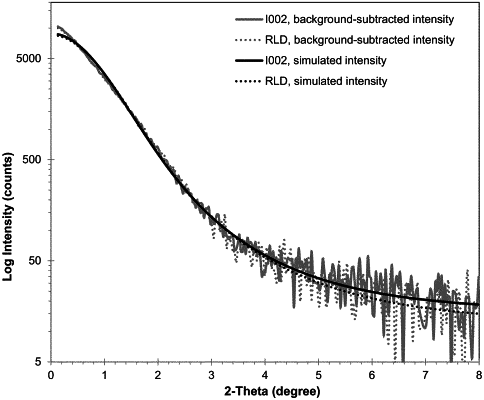| CPC G01N 23/201 (2013.01) [G01N 15/02 (2013.01); G01N 23/207 (2013.01); G01N 33/15 (2013.01); G01N 2223/054 (2013.01); G01N 2223/056 (2013.01); G01N 2223/60 (2013.01)] | 24 Claims |

|
1. A method for rapidly characterizing the iron core of iron carbohydrate colloid nanoparticle products comprising the steps of:
configuring an X-ray diffractometer in a parallel beam transmission geometry for small-angle X-ray scattering (SAXS);
performing SAXS data collection on a first sample of the iron core carbohydrate colloid product as it exists in solution, such sample having been un-manipulated so as to not perturb the iron core and mounted in a capillary; such data being collected from a 2-theta scattering angle of about 0.1° to about 8° in 0.03° increments;
performing SAXS with identical instrument settings on a second solution sample comprising the same or approximately the same carbohydrate composition as the first sample, but without iron;
performing background subtraction of the X-ray intensities as a function of 2-theta scattering angle by subtracting the X-ray intensities of the second sample from the first sample;
generating a modeled background-subtracted SAXS data by modelling the background-subtracted X-ray intensities as a function of 2-theta scattering angle by fitting a distribution(s) of solid iron core particles of different shapes and sizes; such sizes ranging from 0 nm to about 20 nm; such modelling being performed without requiring a priori information or knowledge of the iron core's sub-structure; outputting the size distribution(s), such distribution(s) having a characteristic average particle diameter(s) and relative size distribution(s); and
calculating the volume-averaged or number-averaged average particle diameter(s) and other size parameters from the size distribution(s).
|